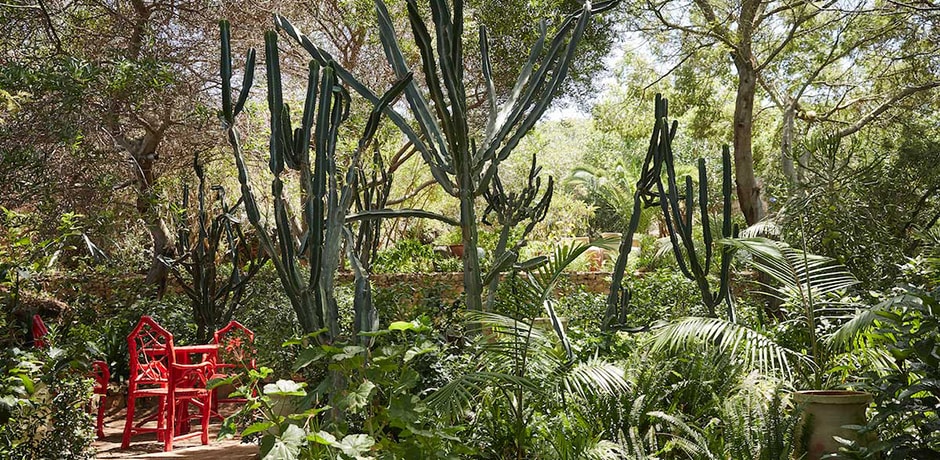Lifestyle
7.1.2021
Rohuna, Umberto Pasti’s enchanted botanical interlude in northern Morocco

When Italian writer and horticulturist Umberto Pasti visited the village of Rohuna, nestled on a rocky hill overlooking the ocean in northern Morocco, two decades ago, he immediately fell under its spell. He was so enamored with it that he decided to create a magical garden in this village of 500 inhabitants 60 km south of Tangier.
A true oasis of softness and poetry in the heart of a desert landscape that Umberto Pasti created by planting the seeds of species that are endangered in Morocco.
”I discovered the place 21 years ago. After a long walk, overwhelmed by the heat, I fell asleep under a fig tree. The ground was barren and there were five old trees. Suddenly, I saw the view of the valley and the sea. The atmosphere was solemn. I dreamed that I was in a garden and when I woke up, I started planting, even though there was no water, no electric light, nothing. Today, there are tens of thousands of plants growing here.”
The garden is made up of about 20 terraces and spaces with Mediterranean and subtropical species from around the world. But the centerpiece is dedicated to plants from Morocco: a hill covered with young forests and a valley full of onion plants. Here Umberto Pasti has planted Madonna lilies, Dietes grandiflora, and Fairy irises, typical of the gardens and farms of the region.
There are several thematic gardens in Rohuna named after people who live and work here. One of them is called Rachid, the name of Umberto’s best gardener. There is also an English garden and an Italian garden in which the plants of Umberto’s youth grow: the olive tree, myrtle, agapanthus, acanthus.

A Herculean task
Umberto Pasti had to negotiate with about twenty owners to buy the necessary land. He wanted to plant gorse, arbutus, viburnum, rosemary, mastic trees and milkweed. The stony, drained soil was ideal for this mammoth project. Tons of topsoil were brought in by mule and miles of dry stone walls were built to prevent erosion. With the help of a probe, the gardeners accompanying Umberto Pasti also found water at a depth of 120 meters. An unexpected find.
Today, six young people are working at Rohuna to maintain and preserve this exceptional area of biodiversity.
A quest for harmony and coherence
Even the few pieces of furniture that Umberto Pasti used to decorate these open-air living rooms were made from arbutus trees found on site, by local craftsmen that he trained since their childhood to accompany him in his quest for harmony.
popular

